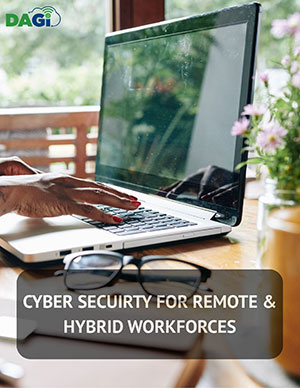 The Rise of Hybrid Work in Ontario
The Rise of Hybrid Work in Ontario
Over the past few years, Ontario businesses have shifted to a hybrid workforce model. From accounting firms in London to manufacturers with remote design teams in Windsor, “work from anywhere” has become the new normal.
But while hybrid work brings flexibility and productivity, it also creates new risks. Many small and mid-sized businesses discovered the hard way that home offices are often the weakest link in their IT security.
That’s where remote work cyber security becomes critical.
Cyber Risks With Remote Employees
When staff work from home — or anywhere outside your main office — your IT perimeter widens. And with it, your exposure to risk.
Common hybrid workforce IT security threats include:
- Unsecured Wi-Fi: Many employees connect on home routers with weak passwords or outdated firmware.
- Phishing Attacks: Remote workers are prime targets for fake login requests and malicious links.
- Unprotected Devices: Personal laptops and mobile devices may lack the same protections as office equipment.
- Shadow IT: Staff downloading free tools or using personal email for work without IT oversight.
Each of these risks can be an open door for cybercriminals.
Secure Remote Access Solutions
The good news? There are tested, business-ready tools to secure your hybrid team.
- Multi-Factor Authentication (MFA)
Adds an extra step beyond the password — critical for securing remote logins.
- Virtual Private Networks (VPNs) or Zero Trust Access
Encrypt traffic between remote devices and your office network, keeping sensitive data private.
- Endpoint Detection & Response (EDR)
Advanced protection for laptops and desktops that can detect and isolate threats.
- Managed Cloud Services
Secure file sharing, email filtering, and collaboration tools through platforms like Microsoft 365.
Best Practices for Long-Term Hybrid Security
Hybrid work isn’t going away — which means long-term IT planning is essential.
- Standardize Devices: Provide business-managed laptops with consistent security controls.
- Regular Training: Run short, practical sessions to keep phishing awareness sharp.
- Backup Everything: Cloud and local backups, tested quarterly, to protect against ransomware.
- Apply Least Privilege Access: Staff only get access to the files and apps they need.
- Monitor 24/7: Proactive monitoring tools catch issues before they become downtime.
When these measures are in place, hybrid work is not just safer — it’s more efficient.
The Ontario Business Reality
For SMBs in Southwestern Ontario, reputation and trust are everything. Whether you’re a healthcare clinic handling patient data or a law office sharing confidential client files, one breach could undo years of goodwill.
Hybrid work adds convenience, but without hybrid workforce IT security, it also adds risk. The businesses that thrive in 2025 will be those that secure remote access as carefully as they lock their office doors.
The Bottom Line
Hybrid work is here to stay — and so are the risks. But with the right strategy, your business can enjoy all the benefits of flexibility without exposing yourself to costly cyberattacks.






